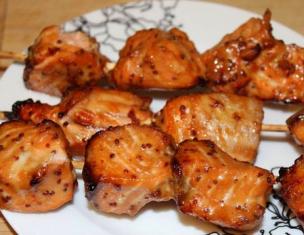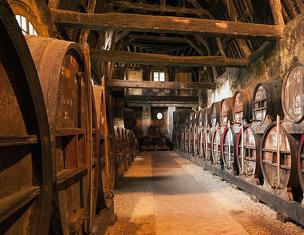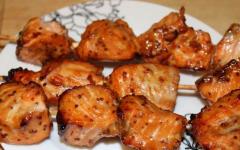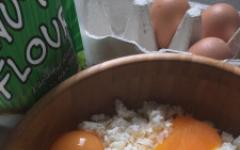The most popular drink in the world is tea, and there are many varieties of this tonic drink. Long tea is especially popular, but not everyone knows about the origin of its name, so I still wonder why tea is called long tea?
In China, since ancient times, there has been a very rare, and therefore expensive, variety of tea called “bai hao”. This is a variety of white tea, the name of which literally means “white hairs.”
In the old days, Chinese traders, trying to lure foreign merchants who did not know much about tea, used this expensive phrase to call not only white varieties of tea, but also others, thereby trying to emphasize the quality of the product and inflate its price.
Russian merchants, having brought goods to their homeland, and also trying to sell them at a higher price, tried to reproduce the name heard in Chinese markets, but they did not succeed very well. Therefore, tea was called “baikhovy”, emphasizing the rarity and high cost of this variety.
Real long tea, the full name of which is “Bai Hao Yin Zhen,” is really very expensive, because it must be collected by hand strictly from March 15 to April 10 and only in a certain area with an ideal climate and clean air. At the same time, only those buds are selected that have not yet had time to open and are covered with fluffy silver fibers.
To obtain permission to collect such tea, you must meet the strictest requirements: lead a healthy lifestyle, do not smoke, do not drink alcohol, do not drink spices, and do not use perfume. 
All these measures allow you to protect your precious buds as much as possible from any foreign odors.
White tea leaves are also manually steamed and then dried. After drying, the fibers become silvery, fully justifying the name of the tea. This tea is incredibly tasty and healthy. There are other, less expensive white teas that are harvested from the top leaves. The collection and processing of such tea is also carried out manually. However, neither the first nor the second of the white varieties are related to the tea that is now called long tea.
In fact, all existing varieties of tea are the same plant, only in their production they use different parts (buds, upper young leaves, coarser leaves, flowers) and process them differently. However, thanks to the cunning Chinese and no less enterprising Russian merchants, the word “baikhovoy” eventually spread to most tea varieties. So now they can call both the real one and the same one... anyone)))
Nowadays this is the name for any crumbly type of tea, which often has only a very distant relation to real “white fibers”.
Real tea, lovingly called “Silver Needles” Bai Hao Yin Zhen occupies a special position - it is a rare and extremely “capricious” tea, which is very much appreciated among lovers. It really doesn't look like anything else.

Emperors valued this tea for its refined taste, refined aroma, and for the fact that it clears the mind and lowers internal heat, which, according to the theory of Chinese medicine, is “the cause of a hundred diseases.”
But besides white, we also know black and green tea.
How are they different?

Until the 18th century, in Europe it was believed that green and black tea were made from different plants - Chinese manufacturers hid the secret of their production. Tea plants began to be supplied from China only in the early 19th century, along with recipes for tea production. A little later, the British discovered wild tea in India, it was named Camellia sinensis. Both black and green tea are obtained from this plant.
Green tea is steamed before oxidation to destroy the enzymes. These same enzymes, when oxidizing black tea, change its color to black and give the corresponding “tea” taste. About 75% of the world's tea leaves are turned into black tea, the remaining 25% into green tea.
Some black and green teas undergo additional processing - for example, adding oil of bergamot (an inedible citrus fruit) to black tea turns it into Earl Gray Tea.

Tea is grown primarily in five countries - China (almost 80% green tea), India (mostly black tea), Sri Lanka (often called Ceylon, home of Lipton tea), Japan (various exotic teas) and Taiwan (various green teas) ).
Tea contains many antioxidants and, when consumed in moderation, improves the immune system and helps prevent cancer and cardiovascular diseases.
HAPPY TEA PARTY!!! :)
Tea is the most noble and ancient drink. Legends and tales are formed around him, tea ceremonies are dedicated to him. It contains a large number of antioxidants that help the body cope with various diseases and stop premature aging. In tea shops in all countries you can now see various types and varieties of teas: black, hibiscus, fruit and herbal. Long tea is especially popular. Many people mistakenly assume that only black tea that goes on sale in loose form is called long tea. But that's not true.
Baikhovy tea: what is it
Bai hao tea can be of different types depending on the manufacturing technology: black, red, green. Initially, only the white variety of tea was considered to be long tea, which was produced from the rudiments of leaves with small white fibers. The more buds the tea had, the more it was valued. This variety was collected and processed by hand. The tea turned out fragrant, aromatic and tasty. Over time, the concept of “long tea” spread to almost all tea varieties, although this did not always correspond to the properties of white tea.
Beneficial properties of green long tea
Green long tea is very popular in Japan and China. It tones well, refreshes, and quickly quenches thirst. Brewed tea turns out to be light green in color with a yellowish tint. The drink has a tart taste, the aroma of rose petals and dry hay. Tea has many beneficial properties:
- improves mood;
- strengthens the immune system;
- has an antioxidant effect;
- has a beneficial effect on prostate adenoma;
- improves digestion;
- reduces blood sugar levels;
- helps to lose weight.
Tea has a beneficial effect on the immune system. Even one cup of this drink improves your mood and gives you a boost of energy. Regular consumption of tea prevents the development of infectious diseases and strengthens the body. Tea has antimicrobial and antiviral effects.
The drink slows down the aging of the body. Among those who take this tea regularly, there are a lot of long-livers. It can improve metabolism.
Tea is used for cosmetic purposes. The antioxidants contained in it improve the condition of the skin and slow down its aging. The skin becomes beautiful, soft and smooth when using products that contain long tea extract.
Baikhovy for men's health. It has been proven that most men after 40 years of age suffer from prostate adenoma. Research results showed that those men who took up to 5 cups of green tea per day had half as many cases of prostatitis.
Green tea drink has a beneficial effect on the body of diabetics. Sugar levels decrease with regular use.
This tea has an antioxidant effect. It reduces the risk of developing malignant tumors. from radiation.
Tea helps with poisoning and digestive disorders. To normalize the condition, it is recommended to drink strong green tea for several days.
Approved for use by pregnant women. It reduces toxicosis.
This type of tea often helps with weight loss. It has a diuretic effect, removes excess fluid from the body, reducing weight. The tea drink contains many polyphenols; they enhance heat transfer, helping to burn fat.

Contraindications for green long tea
- Combining tea with alcohol is not recommended. This can greatly undermine the condition of the liver and kidneys.
- There is no need to drink low-grade green tea. It won't do any harm, but it won't do any good either. It is better to purchase tea in a specialized store.
- Experts do not recommend drinking green tea on an empty stomach, even for healthy people. This may have an irritating effect on the gastric mucosa.
- You cannot re-brew tea; it is not recommended to drink yesterday’s tea.
How to brew green long tea
Speaking about long tea, the benefits and harms of which we have already discussed, it is worth clarifying that you should only drink freshly brewed tea. It is better to use spring or purified water. The temperature for brewing green tea should be no more than 80°C. If you use boiling water, the beneficial properties of tea will disappear, and the taste of the drink may also deteriorate.
The brewing container must be heated with hot water. For 150 ml of water you should take one teaspoon of tea leaves. The tea is brewed and left to steep for two minutes. After this, it is better to immediately drain the first brew and fill it with water again. Then the tea leaves can truly open up. Tea is poured into cups. The taste of tea should be rich, even slightly bitter. Those who like sweet tea can add a spoonful of honey.
Green long tea differs from black long tea in that its chemical composition is almost the same as the chemical composition of green tea leaves. Therefore, green long tea has higher tonic and refreshing properties and quenches thirst well. This type of tea is common in... Japan,. China. South. America, in countries. Average. Asia.
Formation of the quality of green long tea in the production process. The production diagram of green long tea is shown in Fig. 42
Fig. 42. Generalized scheme for the production of green long tea
In terms of technology, the difference between black and green tea is that instead of withering and fermentation, steaming is carried out, due to which the enzymes of the tea leaf are inactivated
For steaming of tea leaves brought from plantations, hot steam is used at a temperature of 170 - 180 °. C, the process continues for 3 - 5 minutes. Such treatment leads to almost complete inactivation of enzymes and suppression of biochemical reactions.
steamed leaves do not have the flexibility and softness necessary for curling, so they are dried on conveyor belts to approximately 60% humidity
. Twisting green leaves is carried out once for 80 minutes. This regimen produces fewer crumbs and bran
The curled leaves are sent to green sorting, during which fractions of different sizes are obtained. This technique facilitates controlled drying
. Drying rolled tea is carried out at a temperature of 105 °. From up to humidity 3-5%. Dried tea leaves are served for sorting
. Sorting produced by the same methods that are used when sorting black long tea. As a result, the following types of green long tea are obtained: L-1. L-2. L-3. D 2,. D-3, bran and crumbs
After packaging, factory grades of green long tea go to the tea distribution factory, where they are used to prepare commercial grades of green long tea
Yellow long tea
Yellow tea is made mainly in... China. This type of tea is one of the best drinks for its taste, aromatic and medicinal properties. For its production, high-quality raw materials are used - exclusively young leaves and buds; the technology has many secrets and is quite labor-intensive. According to one of the methods, yellow long tea is made by withering one part of the prepared leaves of the tea plant and fixing the second part with steam. Then the withered and fixed leaves are mixed and the curled leaves are rolled, subjected to short-heat fermentation, after which it is dried and processed. Sortingbath.
In appearance, yellow long tea is almost no different from black tea, only the tea leaves have a barely noticeable olive tint. In terms of its organoleptic properties, it has a much milder taste and aroma is not similar to any other type of tea.
V. Georgia produces yellow long tea called “Kvitel.” It has a bright yellow infusion color with a slight reddish tint. The color of the boiled leaves is variegated. The taste is soft, mild and impatient, ar. The aroma is complex, reminiscent of the smell of a flowering field on a hot day.
Red long tea
This type of tea (oolong) is produced only in... China. It combines the organoleptic properties of black and green teas
It is produced using a significantly different technology than that used in the production of black long tea. The essence of this technology is that the fermentation process is stopped by drying the fermented drink leaves using high temperatures in order to completely inactivate the enzymes, after which it is rolled, dried and sorted.
Thanks to this sequence of technological operations, red long tea retains twice as much tannins as black tea, so it is much more valuable and extractive
The main difference between red long tea, by which it can be distinguished from others, is the color of the steamed leaves - red at the edges and greenish in the center
Baikhovy tea is one of the most famous and frequently purchased drinks.
Previously, only one type of tea was considered “high tea”.
Baikhovy tea - what is it?
In stores you can find the inscription “baikhovy” on various brands of tea. Now it means that the box contains individual tea leaves that passed:
- withering;
- twisting;
- fermentation;
- drying
What does “loose tea” mean and why loose tea is called that way is known from history. One of the nationalities called expensive and rare white tea “bai hao”. Translated, this means “white fibers.”
The modern drink has lost its common properties with those “villi”, but remains a popular product. Quality depends only on the reliability of the manufacturer.
For many people, long tea has become a favorite because it has the same taste from childhood, when flavored tea bags were not so popular.
Even small changes in leaf processing technology make it possible to obtain a product that is new in taste and quality. There are several popular types of tea and many rare ones.
Black
 This type of drink is the most popular. Brewed it should have a rich brown color without a grayish tint.
This type of drink is the most popular. Brewed it should have a rich brown color without a grayish tint.
The tighter the tea leaves are twisted, the higher the quality of the tea.
Depending on the country where tea is produced, its properties can vary significantly.
The color of the drink can be either reddish or almost black.
You can get acquainted with all the beneficial properties of black tea.
Green
The technology for making green tea is such that the color of the finished drink will not be bright. Fermentation is carried out quickly, so the leaves do not have time to oxidize to a dark color.
The shade of tea may vary between brands and varieties, but should be greenish. The lightest drinks are considered the best.
To make green tea tasty, it does not need to be brewed with boiling water. Water at a temperature of 70 - 80 degrees is enough.
Sugar and milk are not added to this tea. Honey and stevia go better with it.
We wrote about what types of green tea exist, as well as how to brew them.
Yellow
 Yellow long tea is no longer a red, but not yet a black version of tea.
Yellow long tea is no longer a red, but not yet a black version of tea.
Special oxidative processes make it possible to obtain this unusual drink.
The taste of yellow tea is well remembered. It has an amber tint and leaves a pink mark on the cups.
The raw materials of expensive varieties are young buds.
White
Raw materials for white tea – green tea that was harvested in early September or late April. Subsequent weak fermentation leads to the appearance of white fluff on the tea leaves. Villi are rich in essential compounds.
It is believed that this drink is the most beneficial. It is distinguished by the pallor of the infusion, but has a rich taste and aroma. This kind of tea was originally called long tea.
The difference from other teas in price can be significant. It is difficult to find it in bags, since on sale it is more often presented as loose tea.
Red
 If the fermentation process of black tea is shortened, red tea is obtained.
If the fermentation process of black tea is shortened, red tea is obtained.
The shelf life of ready-to-brew tea leaves is maximum because they are resistant to oxidation.
Red tea has a delicate taste and complex aroma. It is brewed with almost boiling water.
The drink belongs to elite varieties and is quite expensive.
Oolong (or "oolong")
This version of tea originated in China and has a long history. There are strict and complex rules for its production.
The process of properly brewing oolong is a real tea ceremony.
It is customary to drink oolong without sugar, separately from eating and smoking.
We have a separate section on the benefits and harms of milk oolong.
Reviews
 People's taste preferences when choosing tea vary greatly.
People's taste preferences when choosing tea vary greatly.
For example, oolong tea is the best tea for some consumers, although there are those who cannot drink it due to its specific taste.
Buyers often prefer black and green long tea. They pay attention to the absence of “dusty” notes in the aroma of the drink, the absence of dyes and artificial additives.
Before buying unusual tea It's worth purchasing a small amount of it. Most stores allow you to purchase a “sample” of 5–10 grams, or a small package of 30 grams, to try a new drink.
Few people know how tea is made. Tea leaves go through many stages of processing before they are turned into a ready-to-drink product.
The first procedure is withering. It consists of gradual dehydration of the leaves. The process takes 10 to 24 hours in the shade and 3 to 6 hours in the dryer.
The liquid level decreases by more than half. Elastic leaves are sent for further processing.
The second procedure is twisting. The leaves are crushed by hand or with special rollers. During compression, juice and oils are released, with which the raw material is impregnated.
 The next process is fermentation.. It is its conditions and duration that most influence the result. By regulating fermentation, drinks of different color, taste and smell are obtained from the same leaves.
The next process is fermentation.. It is its conditions and duration that most influence the result. By regulating fermentation, drinks of different color, taste and smell are obtained from the same leaves.
Withered and rolled leaves are laid out in a dense layer in a dark, cool room and kept until the required stage of oxidation.
Photos of leaves with different oxidation periods show how their color becomes darker and more saturated over time.
When the leaves are sufficiently oxidized, they are dried in ovens. The quality of processing determines how long the aromatic properties of the finished product will remain.
If the temperature was too low, the finished product will be spoiled by the smell of moisture and mold.
Granulated tea goes through another production stage– they not only crush it, but also press it into small balls.
The finished tea is sorted into:
- large-leaf – more valuable;
- medium-leaf – having sufficient taste properties;
- small leaf – tea dust, the price of which is very affordable.
Leaf tea is much tastier and more aromatic than tea dust. Tea packaged at the point of production is valued higher than tea sorted later. This way the leaves do not have time to absorb foreign odors.
Benefit
A cup of strong tea is a well-known remedy for fatigue, weakness and overwork. The drink tones you up and improves your overall well-being. You can drink it even during treatment of poisoning.
Drinks with thyme or bergamot, oregano or chamomile have additional beneficial properties.
Regular consumption of high-quality tea can provide health benefits:
- strengthening blood vessels;
- increasing immunity;
- improving the condition of skin, hair and teeth;
- getting rid of viral infections;
- normalization of metabolic processes;
- regulation of cholesterol and hemoglobin levels in the blood.
Strong tea contains large quantities of tannins. They tone the human body and help fight viruses and food poisoning.
Tannins and caffeine have a tonic effect. Their effect is smoother for the body than when drinking coffee.
The chemical composition of tea includes many compounds. Vitamins B1, B2, C, K, P and PP are contained in small quantities, but will not be superfluous for human health. In addition to them, tea contains iron, selenium, manganese and other macro and microelements.
The nutritional value of the leaves is not of great importance for people who follow a diet - there are almost no calories left in the drink.
Popular manufacturers
The range of long tea is very wide. Some popular brands are shown in the table.
By origin, long tea can be:
- Ceylon – strong, with a reddish tint and a sharp taste;
- Chinese - soft;
- Indian;
- Krasnodar - very rare;
- Baku;
- Georgian and others.
Storage conditions significantly affect the preservation of tea. Tea leaves can absorb moisture and odors. For ease of storage, you should give preference to packaging that closes well.
Possible harm
 Abuse of tea leads to “washing out” of beneficial substances and mineral compounds from the body.
Abuse of tea leads to “washing out” of beneficial substances and mineral compounds from the body.
An experiment was carried out at the University of Hawaii, in which a group of students drank 6 cups of tea every day. The students’ well-being soon deteriorated – problems with sleep, mood and appetite appeared.
Tests showed a lack of vitamins. Experts then suggested that tea tannins “bind” and remove certain substances.
If you drink too much strong tea once you can feel the symptoms:
- insomnia;
- increased nervous excitability;
- cardiopalmus;
- redness and feeling of heat on the skin of the face;
- unpleasant sensations of compression in the heart area;
- feeling of anxiety and unreasonable fear.
 The characteristics of domestic and imported tea in Russia are regulated by GOST.
The characteristics of domestic and imported tea in Russia are regulated by GOST.
For example, for packaged green baykh tea this is GOST 1939-90, and for black tea GOST 32573-2013 and the interstate standard “Packed baykh black tea” are used. Specifications", which replaced GOST 1938-73.
The documents indicate each characteristic - the normal aroma and color of drinks, the rules for their classification and transportation.
Package marking is also regulated in such a way that dubious products do not appear on store shelves.
Currently, many varieties of this drink are called long tea. When choosing tea, you should focus only on its quality.
When buying tea in a package, we are deprived of the opportunity to examine the contents, smell it, or at least evaluate its appearance. In this case, all that remains is to be guided by the data that the manufacturer indicates on the label. On the packaging you can read about the type of tea, the country of origin, quality marks indicating the purity of origin and control over its production, region of growth, variety, expiration date. Special designations in letters of the Latin alphabet indicate the manufacturing technology, size and quality of tea leaves. You can often see the inscription “bakha tea” on the label. It wouldn't hurt to find out what it is.
What is long tea
To understand what long tea means, you need to know that after processing, all tea is divided into three main groups:
- Baykhovy.
- Pressed.
- Extracted.
The last group includes instant drinks, which are produced in liquid or powder form. Pressed tea, as the name suggests, is pressed. However, its main difference is not in the shape it is given (tile, disk or brick), but in the quality of the tea leaf. The coarsest raw materials (shoots of tea bushes and mature lower leaves) are pressed into bricks, and tea leaf crumbs and dust are used to press the tiles.
Long tea is the most common type, which we consider to be loose tea, since its tea leaves are not connected to each other. But this interpretation of this term is not entirely accurate. The word “bai ho” comes from the Chinese “bai hoa”, which translates as “white eyelash”. This is the name given to the tips present in its composition - unblown leaf tea buds with white fibers.
The more buds there are in tea, the more valuable and high-quality it is, the more refined its taste and aroma. In ancient times, Chinese tea traders sold their goods to Russian merchants, repeating the word “bai hoa” to emphasize its value. Merchants, without going into the subtleties of translation, realized that this word is practically synonymous with high quality.
Later, all high-quality loose teas began to be called long tea, in contrast to pressed teas, which were made from raw materials of poorer quality. This name has stuck with them to this day. Depending on the technology and methods of processing tea leaves, black (or red), green, white and yellow long tea, as well as oolong tea, are distinguished. The quality and taste of each of these types still depends on the presence of tips in the composition, as well as on their quantity.
Green long tea

Green long tea is usually divided into two types: leaf and broken (cut). The second category differs from loose leaf tea, which has whole leaves without damage. Green tea, unlike black tea, practically does not undergo fermentation (oxidation) and retains much more biologically active substances. Its infusion has a yellowish-green tint. The best drink is the one with the lightest infusion.
Black long tea
Black long tea differs from green tea in the production method. With the existing method of processing and production, it goes through the stages of withering, rolling, fermentation and final drying. Based on the size of the tea leaves, they are divided into three types:
- sheet;
- broken;
- small.

The first category includes large-leaf black tea. Broken, or, as it is also called, “broken”, contains medium-sized tea leaves, and the small category includes seedings and crumbs. Each of these groups, in turn, is divided into categories depending on the quality of the raw materials used for production. Leaf is divided into four categories, medium also into four, broken into two. Each category is designated by a corresponding Latin abbreviation, in which all letters have their own meaning, for example:
- T. - “tippy”, tea tips, thanks to which the drink acquires a delicate aroma and taste.
- S. - “special”, selected, exclusive black long tea.
- O. - “orange”, young whole curled leaves.
- P. - "pekoe", mature leaves without tips.
- B. - “broken”, broken tea leaf.
- D. - tea crumbs.
Black long leaf tea has tea leaves of a very dark color, almost black. The stronger the tea leaf is rolled, the higher its quality is considered.
Other types
In addition to green and black, other types of long tea are produced:
- Yellow. In China it is made from high-quality raw materials and is called “imperial”. It goes through the following stages of processing: drying, steaming (light frying), rolling and drying. This type of tea is classified as weakly fermented. Its infusion has an aroma with floral notes and has a significant tonic effect.
- White. This species is considered elite and is produced from tips and young leaves. It has an almost colorless infusion, rich aroma and rich taste.
- Oolong. It is produced by withering, rolling, short fermentation, roasting, re-rolling and drying.
Benefits and harms
The benefits and harms of long tea are determined by its chemical composition. The most valuable substances contained in tea leaves are:
- vitamins A, group B, C, PP, K;
- essential oils;
- tannins;
- microelements (iron, magnesium, potassium, etc.);
- polyphenols (tannins, catechins, etc.).
It should be noted that the absence of a fermentation stage preserves a large number of useful elements in green tea. It contains almost ten times more vitamin C than black, and almost twice as much catechins, which have strong antioxidant properties. As for the harm of the drink, this relates, first of all, to the caffeine content. To minimize its effect on the body, you should not drink strong brewed tea in unlimited quantities.
Manufacturers

Black and green long tea packaged, like other types, are produced today by many tea countries. The main producers are:
- China. Green tea produced in the southeastern provinces of China has always been considered one of the best. Today he also confidently holds the palm.
- Sri Lanka. The best black long tea is produced here, which is known as Ceylon (since the former name of this island is Ceylon). Highland tea produced in Sri Lanka is considered practically the standard of taste and quality.
- India. Indian tea can easily compete with Ceylon tea in its taste, but is slightly inferior to it.
Black long tea is also grown in Georgia and southern Russia. The Krasnodar variety “Extra” is produced from the leaves of high-mountain tea bushes, which are collected and processed by hand. It is considered the most northern tea in the world. Recently, packaged drinks produced by many manufacturers have been gaining popularity. It can be either black or green. Often it consists of very small fractions of tea leaves, dust and crumbs placed in a bag. Manufacturers can also produce high-quality expensive long tea in bags, but it is much less common.









